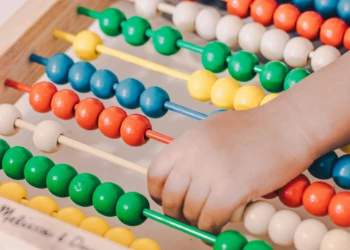
In the journey of mathematical development, mastering number bonds is a pivotal step for children as they embark on understanding addition. Number bonds serve as the building blocks for more complex mathematical concepts and pave the way for a solid foundation in arithmetic. This article explores the intricacies of how children learn number bonds and its significance in their early mathematical education.
Understanding Number Bonds
Number bonds are the fundamental relationships between numbers, showcasing how they can be combined to form a given total. In the context of addition, these bonds help children break down numbers into smaller, manageable parts, fostering a deeper comprehension of arithmetic.
Concrete Manipulation
Similar to learning addition, children often begin by manipulating concrete objects to understand number bonds. Utilizing tangible items like counting blocks or objects, they physically combine and separate groups, providing a hands-on experience that lays the groundwork for abstract thinking.
Visual Representation
Visual aids, such as diagrams or charts, play a crucial role in the learning process. Number bonds are often represented as a pair of circles connected by a line, illustrating the relationship between the parts and the whole. Visualizing these connections enhances children’s ability to grasp the concept intuitively.
Fact Families
Number bonds are closely linked to fact families, a set of related addition and subtraction facts. Exploring these relationships helps children recognize the inverse nature of addition and subtraction, deepening their understanding of number bonds and the interconnectedness of basic arithmetic operations.
Consolidating Counting Strategies
Counting strategies continue to play a significant role in learning number bonds. Children progress from basic one-to-one counting to more sophisticated strategies, such as counting on, counting back, or identifying doubles and near-doubles. These strategies contribute to a flexible and efficient approach to mental calculations.
Games and Activities
Engaging games and interactive activities make learning number bonds enjoyable and effective. Whether through board games, online platforms, or classroom activities, incorporating play into the learning process adds an element of fun while reinforcing the concept of number bonds.
Daily Application
Integrating number bonds into everyday situations reinforces their practicality. Activities like sharing snacks, distributing objects among friends, or organizing toys into groups provide opportunities for children to apply number bond concepts in real-life scenarios, enhancing their practical understanding.
Progressive Complexity
As with addition, introducing number bonds gradually in increasing complexity ensures a smooth learning curve. Starting with simple combinations and gradually progressing to more challenging bonds allows children to build confidence and competence in understanding the relationships between numbers.
Mastering number bonds is a critical milestone in a child’s mathematical journey. Through concrete manipulation, visual representation, fact families, counting strategies, games, and daily application, children develop a robust foundation in understanding the connections between numbers. Fostering a positive and engaging learning environment ensures that children not only grasp the concept of number bonds but also cultivate a love for mathematical exploration.
